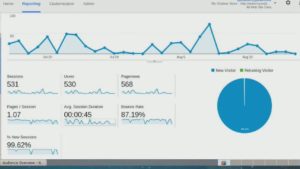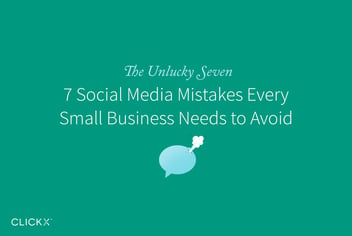Three Steps For Mastering Social Media Advertising
Paid advertising through social media has skyrocketed over the past five years and it’s only going to continue. With active members still growing on most social networks, the opportunities for reaching new audiences and customers seem endless.
But for small businesses, it can seem overwhelming. We often hear about the successful—even viral—social media campaigns pulled off by huge companies and corporations. Without the budget or resources, how can a small business possibly compete? Social media advertising can also feel like unknown territory, with an uncertain ROI.
The good news is that social media advertising is more accessible for small businesses than ever before and, done correctly, it can be a powerful tool in your online strategy.
This post will give you the essentials steps for creating a strong advertising campaign that you can be confident will be worth the time and money spent.

1. Develop a Strategy
The first step is to think long and hard about the basics of your advertising campaign.
Define Your Goal
As with any online strategy, you need to begin with a clear, measurable and realistic goal. Whether the goal is to direct customers to your site, increase sales or gain contacts, it needs to be the bedrock of everything you do.
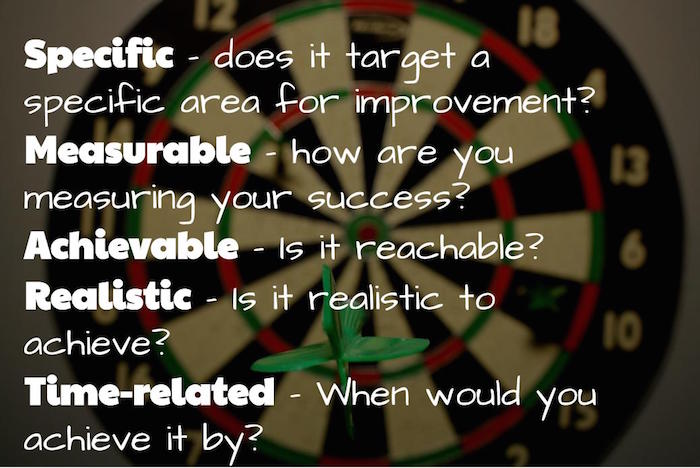
We recommend using the SMART goals methodology to give you direction.
However, don’t use social media figures alone as your goal. Targets such as ‘1,000 Twitter followers’ or ‘100 likes on Facebook’ don’t mean anything if they’re not providing a return for your business. You need to have a wider objective, of which social media numbers can be a part.
Consider Your Budget
As you learn about advertising on social media, you will become willing to spend more. When you’re just setting out however, it’s understandable that you might be a bit more frugal, since it is unclear whether or not it will work for you.
Exploring the social networks and their advertising options will inform how much you should spend on a campaign. It can vary a lot, depending on how many people you want to reach and which network you go with. Once you have an idea, set your budget and stick to it.
Choose Your Tool
Of course, there isn’t just one social network out there; there is a plethora of platforms upon which you can post your advert. If you’re on a limited budget, you can’t post on all of them, so you need to research what each of them can do for you and select wisely:
- Facebook. As we’ve seen in a previous post, while it’s good to have a presence on Facebook, using it for paid advertising may not provide the best ROI. Algorithms that don’t favor brands, dipping user numbers and expensive advert processes mean that you might be better off elsewhere.
- Twitter. With a number of advertising options, efficient targeting settings and in-depth analytics tools, Twitter is often the preferred platform for social media advertising. A downside is that Twitter users often follow hundreds of accounts, so your advert might get lost in a sea of tweets. However, Twitter regulates your spending, so you only pay for people who engage with what you’ve posted.
- LinkedIn. While mainly aimed at professionals, LinkedIn offers a significant range of advertising and targeting options. However, at $3.50 per click, advertising on here can be expensive.
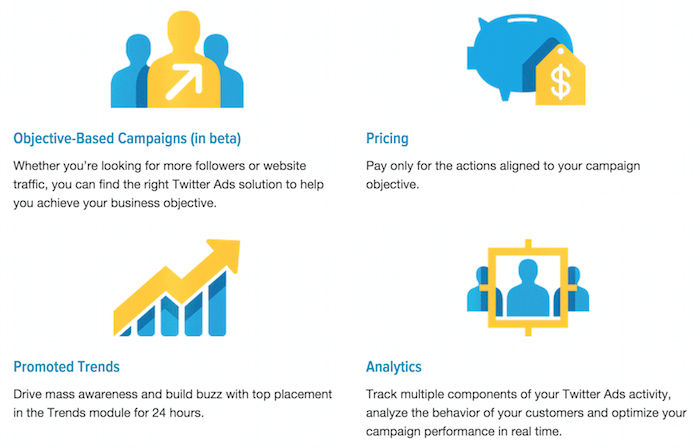
Twitter Ads can be highly targeted (and highly effective).
These are just the big three names; Google+, Instagram, Pinterest and Tumblr also have advertising options which should be considered.
Know Your Audience
It would be nice for a business to send out an advert for all the world to see, but in a bubble where you’re paying for engagements, this is not possible for a small business. Therefore, your advert needs to be targeted to make sure it reaches the right people.
Twitter is a good example of a social network with extensive targeting options. You can select specific locations, age ranges and interests relating to your advert, as well as targeting specific users, their followers and similar accounts. By targeting your business’ audience, you will be narrowing the amount that your advert can be seen, but increasing the chances of landing in the newsfeed of a potential customer.
2. Create Engaging Content
Content is king! This is one of the earliest things you need to learn as you develop your online strategy, and it’s especially true for social media adverts.
Make It Stand Out
User interfaces for social networks generally consist of newsfeeds, full of information, pictures and other updates from various sources. To avoid your advert being overlooked as users scroll, make sure that your advert is eye-catching.
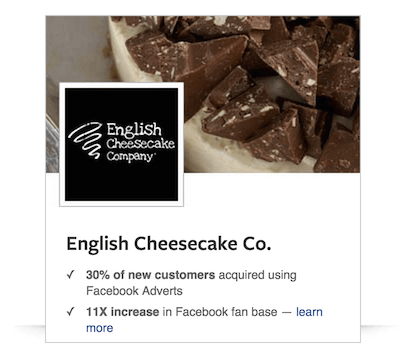
Photographs of food, as you might expect, can be highly effective.
Pictures are the safest way to do this, but they must be interesting to look at. Other possibilities are videos or gifs, which catch the users eye with their movement, but may be more difficult or costly to create.
Give A Clear Call To Action
If a user sees your advert, that’s great, but if that’s all that they do, the chances are that they will completely forget about it later. They need to engage with it in some way if they are to become a potential customer.
They may click through to your page or profile, but ideally you want to get them onto your website so that they can explore or even become closer involved with your business. Give them a link to follow and a reason to follow it.
Ways to tempt in customers could include discount codes or intriguing, attention-grabbing headlines. However you decide to lure in users, make sure that it is clear and engaging!
Don’t Forget Your Organic Activity
While you’re using the paid advertising on a social network, make sure that you also keep up your regular activity. A user could see your advert and be directed to your page, but if there’s no good-quality, recent content on there except for your advert, they might turn away and not come back.
3. Analyze Your Results and Learn From Them
Remember the goal that you set in the first step? After you’ve created and run your campaign, you need to find out whether you achieved it.
Social Media Analytics
Most of the social networks have in-built analytics systems which will show you how well your advert is doing. You will be able to see how they perform throughout the day geographically and provide an idea of overall costs.
These figures can inform future campaigns. You might change your targeting to make it wider or tighter, or you might change your demographic entirely.
If your goal is to pull customers to your site, your social media analytics should be combined with…
Website Analytics
Using Google Analytics on your website will tell you how your social media traffic has been affected by your advertising campaign. Users who arrive at your site from your advert may stick around and browse, or they might leave straight away. Look at the bounce rate and pages per session for your social media traffic—this will inform you whether the link in your advert is the best one.
Use What You’ve Learned
With the figures that you’ve seen on your analytics, and bearing your goal in mind, consider how your campaign could have been improved. Paid advertising can get great results from the get-go, or they can develop with time and investment. It may be that you need to experiment with the content, the targeting or even the platforms before you find your business’ social media advertising niche.
Conclusion
Follow these three steps for each of your advertising campaigns and you will begin to see a healthy ROI:
- Develop
- Create
- Analyze
Since social media advertising requires an investment of time and money that may sometimes seem difficult for a small business to justify, it cannot be done in a gung-ho way. Careful consideration for the strategy, content and analysis are tools that you need to employ if your business’s online presence is to gain anything from your adverts.
Have you had any particular social media advertising success stories? What worked best for you? Let us know in the comments!
Image Credits: Aaron Davis




